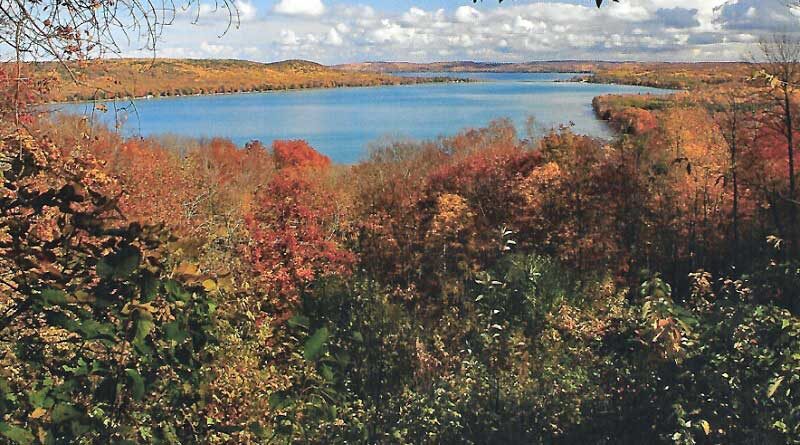Visionary Views

By Dianna Stampfler
Cadillac-born Pierce “Pat” Stocking had a vision and he wanted to share it with others who explored the scenic shoreline in what is now known as the Sleeping Bear Dunes National Lakeshore. He pictured a series of overlooks atop the dunes where visitors could gaze out, up and down to soak up the unparalleled vistas while also protecting the area’s fragile ecosystems.
In the early 1960s, Stocking – a land developer, lumberman, woodsman, environmentalist and naturalist – set out to carve his scenic trail to the top of the dunes. By 1967, the 7.4-mile “Sleeping Bear Dunes Park” (also briefly known as the Philip A. Hart Nature Trail) opened to the public, complete with a charming covered bridge. Stocking operated the drive until his death nine years later, and after that the National Lakeshore added it to its portfolio and renamed it the Pierce Stocking Scenic Drive in 1979.
Over the past 50-plus years, millions of visitors from around the world have traveled along Stocking’s picturesque route enjoying the legacy he left for generations to come. The road is open to automobiles, motorcycles and skilled bicyclists – as the route is steep, with sharp turns and often heavy vehicle traffic.
And while the scenic drive is open from May through October, it is the fall season that is unquestionably the most colorful and vibrant as the yellows, reds and oranges of the maples, birch and aspen contrasting against the deep green pines that make up the woodland areas alongside the dunes.
From the Glen Lake Overlook (#2), Big and Little Glen Lakes – separated by the famed M-22 – sparkle a brilliant cobalt blue while the Lake Michigan Overlook (#9) is perched some 450 feet above Lake Michigan, atop the towering “Mother Bear” sand dunes. On clear days, the North and South Manitou Islands can be seen in the distance, representing the cubs for which the legend of the Sleeping Bear comes from. Pack a picnic for a one-of-a-kind al fresco experience or bring a chair or blanket and settle in for a stellar sunset like no other from several of the designated overlooks.
Ten unique trails can be found throughout the Sleeping Bear Dunes area, ranging from 1.2 to 16 miles and offering varying levels of ability. The Alligator Hill Trail offers three loops (3-8 miles) rated as easy to moderate while the Bay View Trail includes an easy 2.4-mile Farm Loop and 4-mile moderate Ridge Loop. The 3.5-mile Dunes Hiking Trail and 2.8-mile Sleeping Bear Point Trail are hilly and sandy, thus earning them strenuous activity level ratings.
Of course, the 284-foot-high Dune Climb is the most famous attraction in the National Lakeshore and it is open year-round for those who are up for the challenge. The trek can take 10 minutes or more – depending on the skill of the climber – but the expansive views from the top provide a great reward for effort.
Nearby historic sites like General Store, Boat Museum (former Glen Haven Canning Co.), Blacksmith Shop, Maritime Museum inside the Sleeping Bear Point U.S. Life-Saving Service Station and Maritime Boathouse in Glen Haven as well as the Port Oneida Rural Historic District are occasionally open during fall color tour weekends, but even when they’re not the buildings themselves are picture worthy.
Traditionally, the Pierce Stocking Scenic Drive opens in early May through the fall color tour season, depending on weather conditions, staying open until about an hour after dusk to allow for those memorable sunsets. As is it part of the National Lakeshore, paid admission is required at $25 for a 7-day auto pass or $45 for an annual National America the Beautiful Pass, which is good for 365 days from the time of purchase. Admission passes can be purchased at the Philip A. Hart Visitors Center at the intersection of M-22 and M-72 in Empire. For more information, visit nps.slbe.

